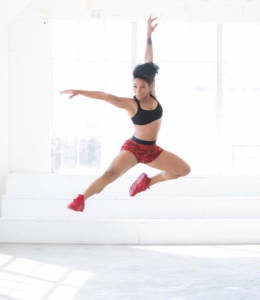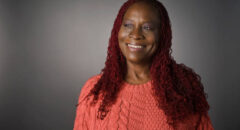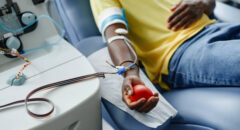
I was attending a Group Fitness Modality Training when I met another trainer by the name of Candyce Heather. We had a lot in common-- as in life, we were the minorities in the room, African American women with very interesting hair to be more specific. In no effort to alienate ourselves, we began to chat, and it wasn’t until it was time for us to sit for our lecture that Candyce revealed to me she had Sickle Cell Anemia or Sickle Cell Disease.
During these trainings, we tend to sit for hours, in a room where the A/C is blasting, so Candyce pulled out layers and layers, and even brought out a plush blanket before finding her way to her seat. Everyone looked at her like she was insane because honestly, she appeared to be getting ready for the best adult-office nap of anyone’s life.
That’s when Candyce revealed to the rest of our colleagues that she was living with this chronic illness, which surprised most because when you look at Candyce, you see a healthy, fit, and fine individual. There’s no way anyone would know without her sharing this information. That’s why it’s commonly referred to as “The Invisible Disease”.
I’ve always known of Sickle Cell Anemia, but I was never clear on what it is or how it affects its carriers. It is a genetic disease that can result from each parent carrying the trait, which is carried in about 1 in every 12 African Americans. Sickle Cell Disease occurs in about 1 in every 365 African American births. While there aretreatments for the disease, there is no widely available cure, although a stem-cell transplant procedure has been developed at the National Institutes of Health in Bethesda, Maryland, and validated at UI Health.
People living with sickle cell disease produce sickle, or crescent, shaped red blood cells. This affects the immune system, and the misshapen blood cells, if caught in the blood vessels due to oxygen deprivation, can result in organ damage or extreme pain in any given area of the body. This is called Sickle Cell Crisis and factors that can trigger it include overexertion, dehydration, stress, and extreme temperature change. No, you can’t look at someone and know they’re living with it, but it is serious and living a quality life with sickle cell disease takes a lot of planning and prepping.
It’s already challenging enough to find one’s health and fitness groove, so you would think that figuring it out while living with a chronic illness would be impossible, but Sickle Cell Warriors like Candyce prove this to be false every day. It’s possible to live day-to-day without said planning and prepping, but in order to live fully and successfully, Candyce recommends forming an action plan and being intentional.

In addition to teaching multiple fitness classes each day, Candyce also makes time for her personal fitness. With overexertion anddehydration being contributing factors to sickle cell crisis, Candyce has to be sure to workout within her limits and keep lots of water on deck. She travels with a collection of spare clothing, snacks, and pain medications in the event that she absolutely needs them. In short, she stays ready so she doesn’t have to get ready.
Contrary to what some may believe, exercise is good for those living with sickle cell disease. Exercise can help with maintaining mobility and strength, but it also pumps up endorphins, which can help alleviate stress along with positivity and an empowering mindset. It’s also important to eat for life and not for instant gratification. “Treat and fuel your body like you would a $100,000 car.” One way to approach this is by enrolling in an integrated nutrition course, which is what Candyce did so she could learn how to balance her meals and avoid consuming toxic foods.
Although Candyce has experienced severe crisis on multiple occasions, has been hospitalized while in other countries, and deals with chronic fatigue every day, she’s grateful for her condition. Living with sickle cell has taught her to live a more positive, better quality life. She’s no longer naïve or embarrassed to talk about her illness and makes it a point to raise awareness, educate herself and help other Sickle Cell Warriors thrive.
 Jasmine Danielle is a Los Angeles based dancer and fitness trainer. She received her BFA in Dance from the University of Illinois at Urbana-Champaign and has studied with FiTour, the National Federation of Personal Trainers, and the Equinox Group Fitness Training Institute. Jasmine is currently a Group Fitness Instructor for Equinox, Everybody Los Angeles, and Sandbox Fitness. Her fitness modalities include, ballet, dance cardio, barre fitness, TRX, treadmill interval training, cardio kickboxing, jump rope, indoor cycling, and metabolic conditioning.
Jasmine Danielle is a Los Angeles based dancer and fitness trainer. She received her BFA in Dance from the University of Illinois at Urbana-Champaign and has studied with FiTour, the National Federation of Personal Trainers, and the Equinox Group Fitness Training Institute. Jasmine is currently a Group Fitness Instructor for Equinox, Everybody Los Angeles, and Sandbox Fitness. Her fitness modalities include, ballet, dance cardio, barre fitness, TRX, treadmill interval training, cardio kickboxing, jump rope, indoor cycling, and metabolic conditioning.









